Reactive Matters: Photography and Nuclear Materials
June 3 - July 23, 2016 | Newspace Center for Photography, Portland OR
Artists:
Jeremy Bolen | Abbey Hepner | Shimpei Takeda
Overview:
Reactive Matters explores the ways in which nuclear energy permeates our surroundings – its presence lingering in the soil we tread, the water we consume, and the roads we often travel. To reveal its direct impact on our environment, artists Jeremy Bolen, Abbey Hepner and Shimpei Takeda employ alternative photo processes that incorporate radioactive materials at different stages of the image's production. Similar to documentary photography, they provide various perspectives of the issue—from close up views of the effects of radioactive material when in contact with film, to a comprehensive account of nuclear waste facilities in the U.S. through the fogged lens of one of nature's most toxic elements.
Jeremy Bolen traveled to several locations where nuclear waste remains and recorded this invisible energy by first burying film in the contaminated soil, and then unearthing and loading it into his camera to capture the surrounding landscape. Abbey Hepner uses a century-old photographic process that substitutes uranium for silver to form images that track and document nuclear waste facilities in the U.S. To create the photograms in his series Trace, Shimpei Takeda exposed photo-sensitive paper to radiation emitted from polluted particles in soil from around Fukushima, Japan, the site of a 2011 nuclear disaster.
These projects disclose traces of nuclear matter in our surroundings—a silent, invisible energy revealed here through contact with photographic materials. The resulting works are eerily ironic as their forms take on poetic, abstract and often dreamy qualities. They embody the tension in contemporary culture between the uses and abuses of nuclear matter that serves both as a source of energy as well as a destructive force of war and ecological catastrophe. It is with their very existence that these works function as material witnesses to the effects of nuclear energy on the environment, and on those inhabiting it.
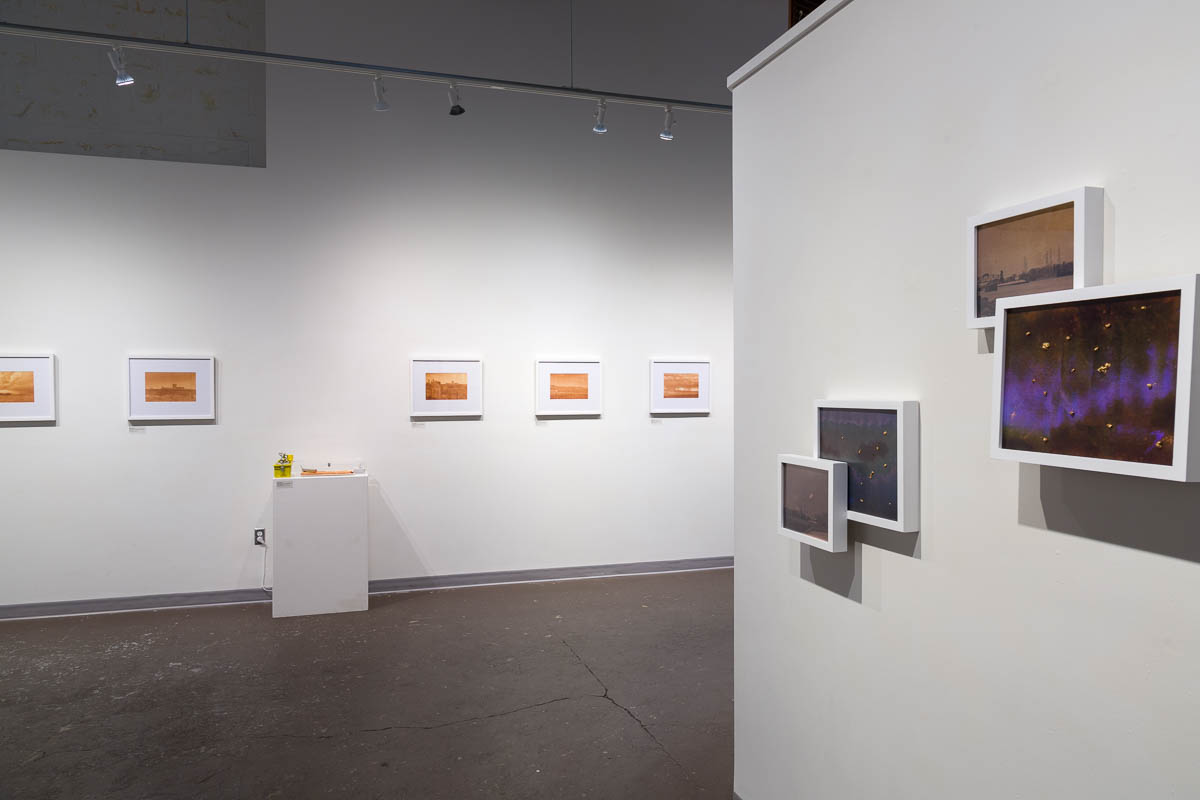
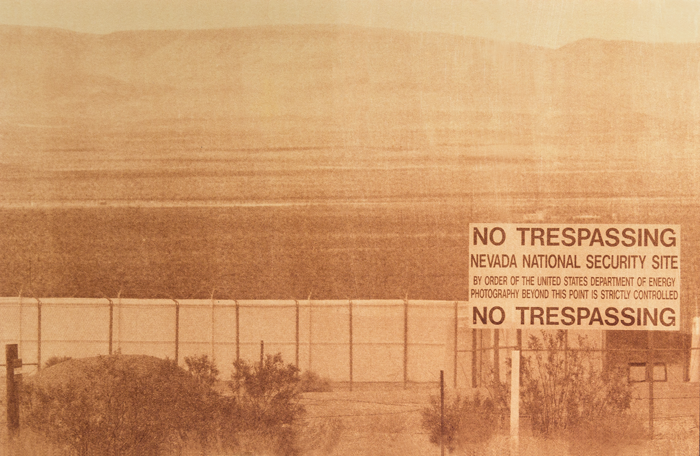
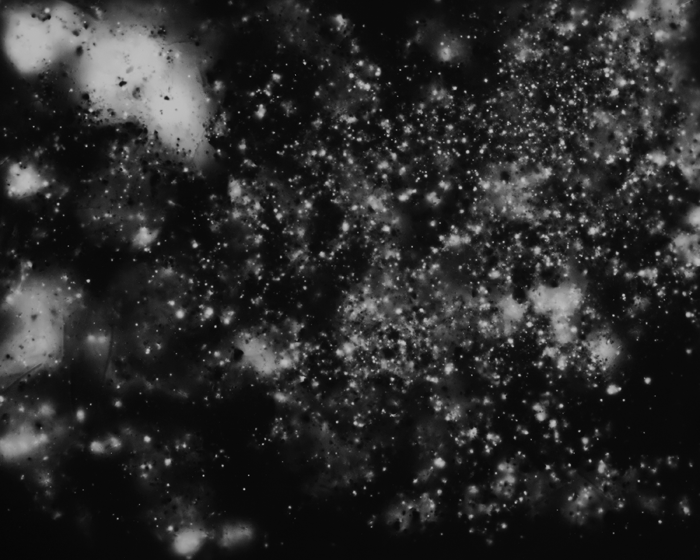
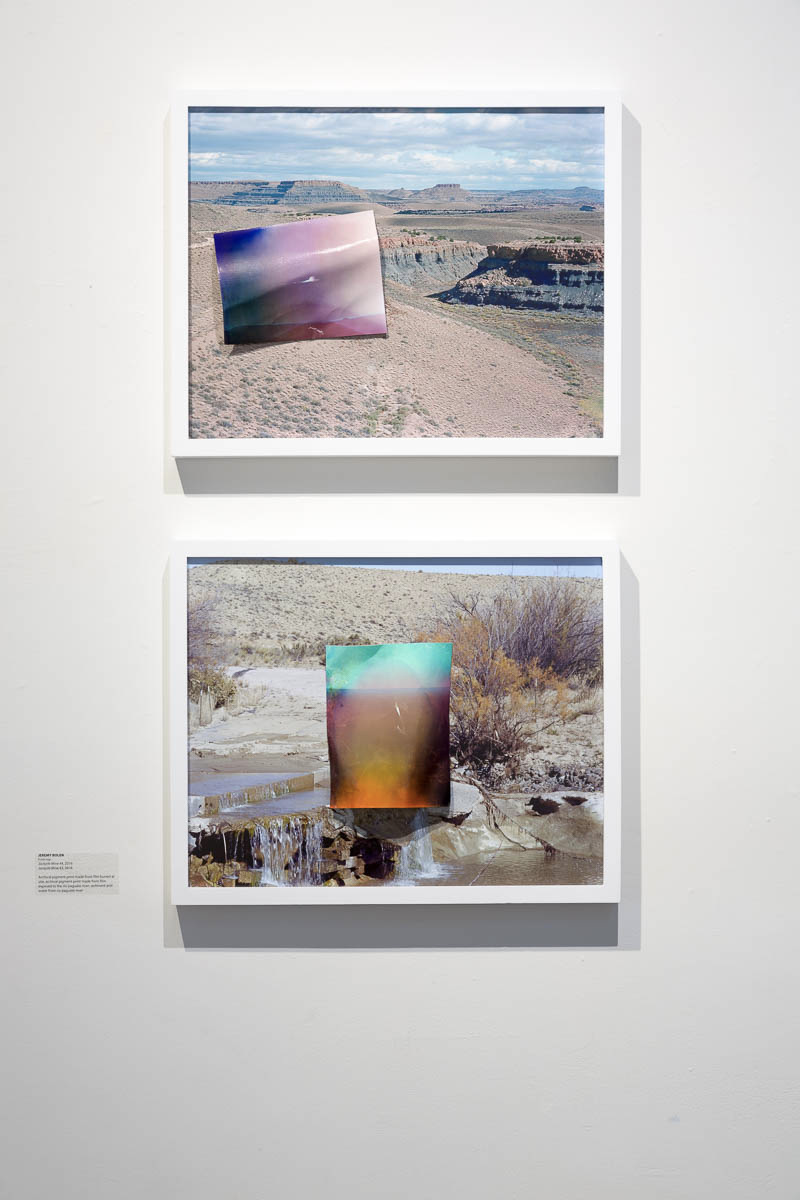
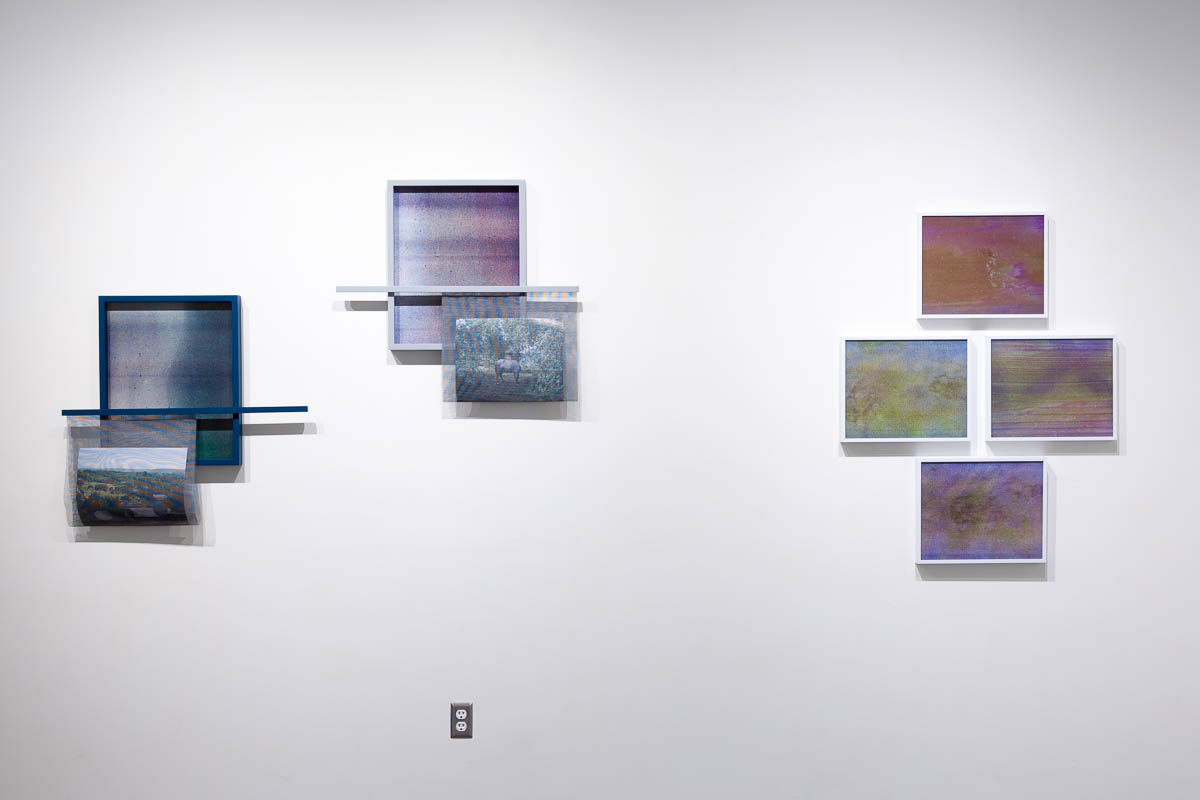
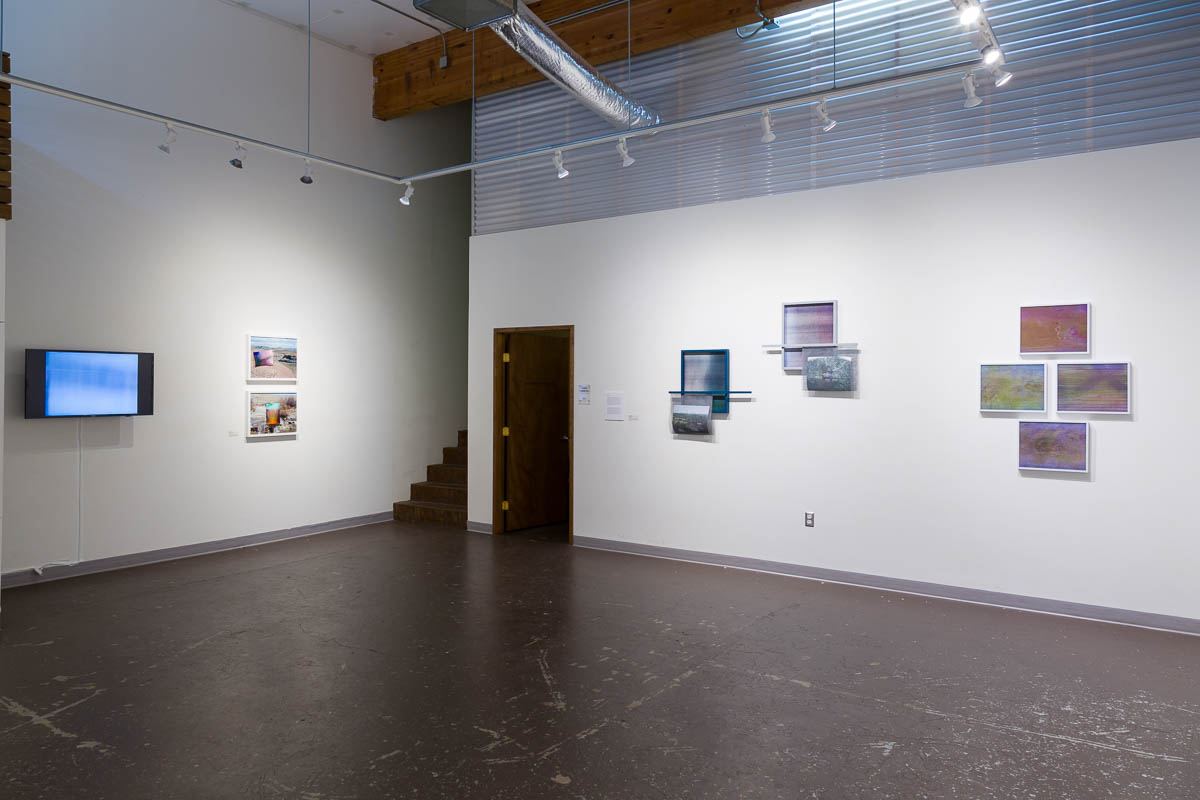
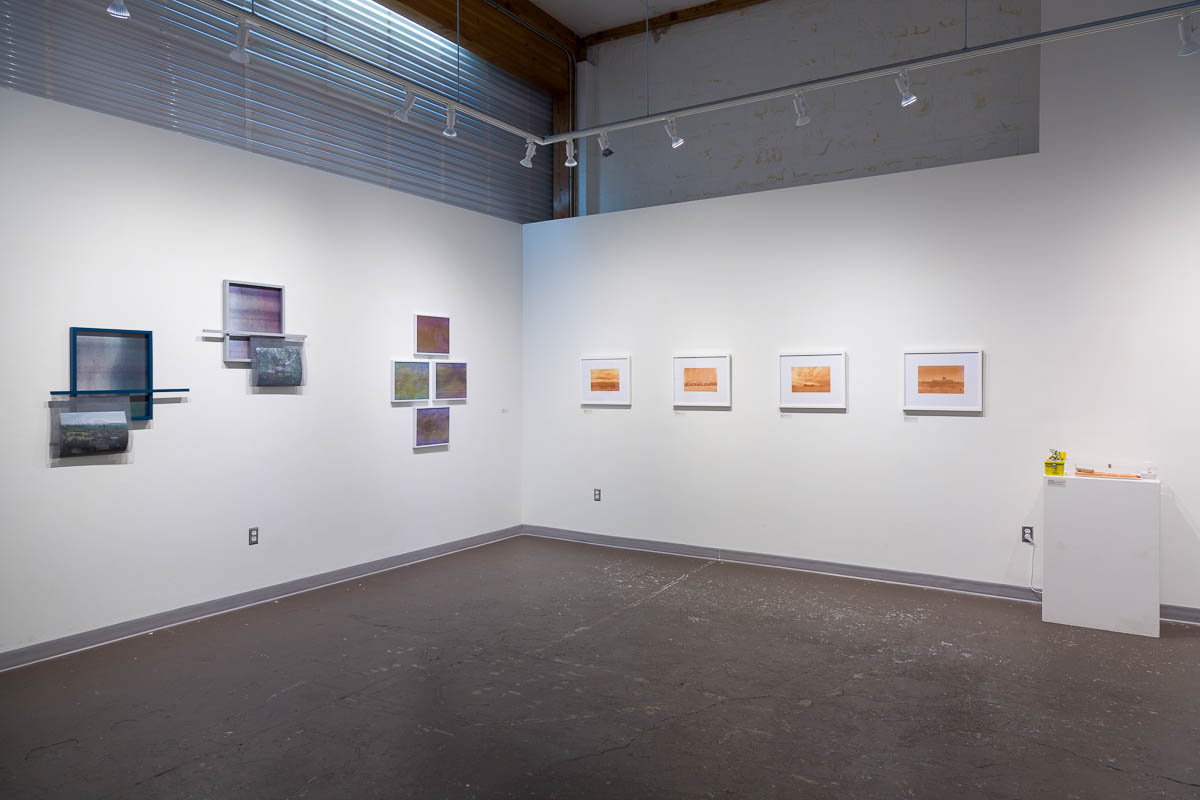
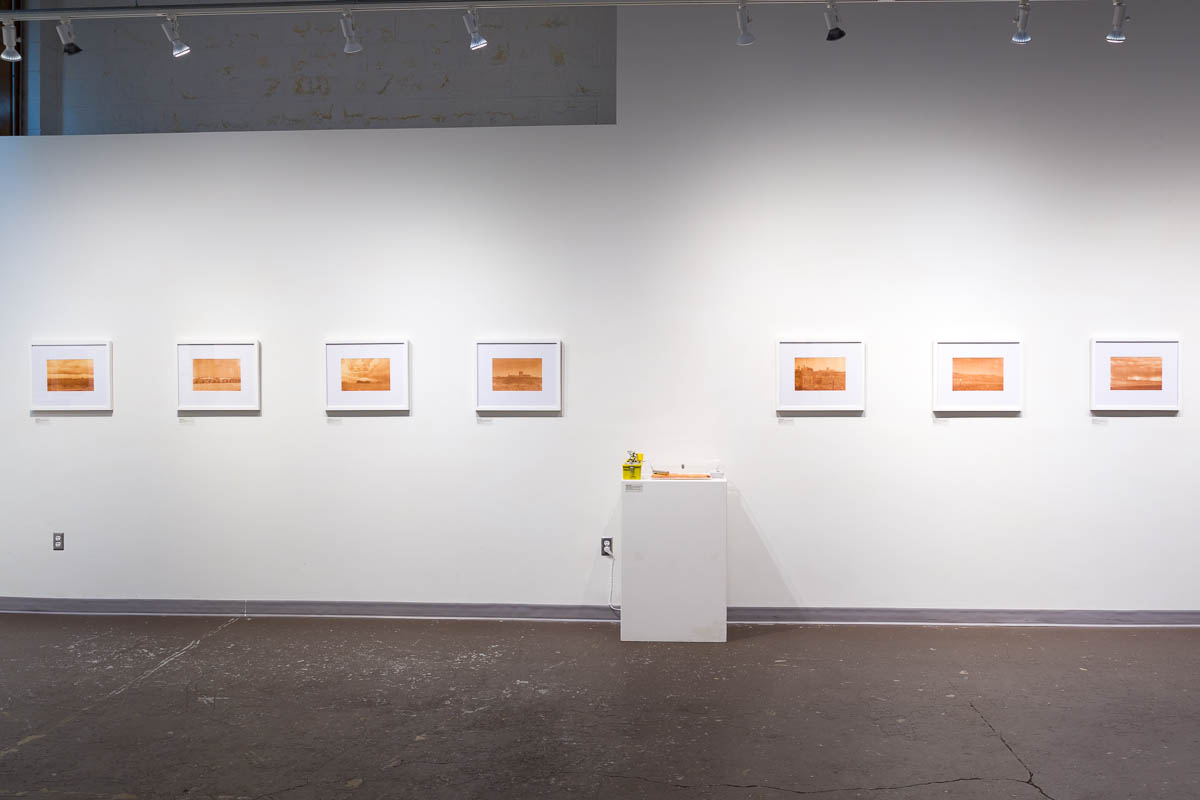

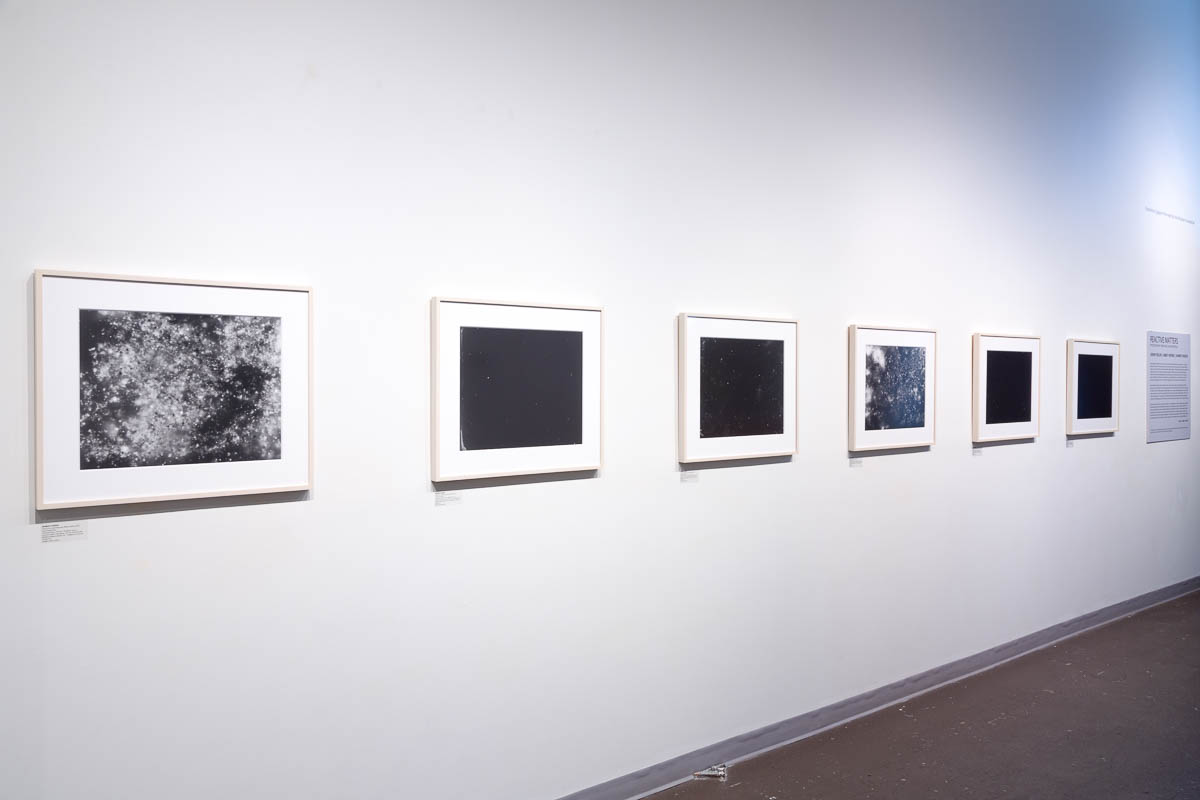
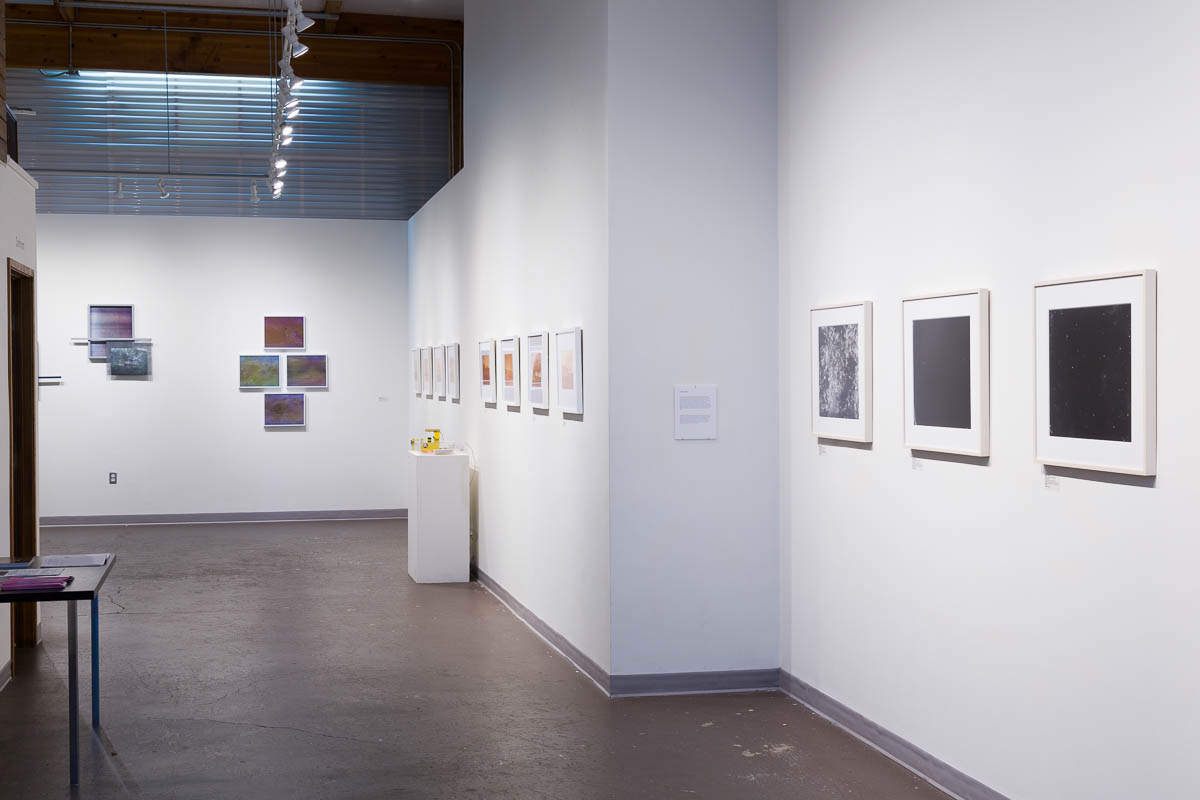
Curatorial Statement:
The exhibition Reactive Matters explores the ways in which nuclear energy permeates our surroundings – its presence lingering in the soil we tread, the water we consume, and the roads we often travel. Artists Jeremy Bolen, Abbey Hepner, and Shimpei Takeda employ alternative photo processes that incorporate radioactive materials at different stages of the image’s production to create unique documents of nuclear technology’s environmental implications. Similar to documentary photography, they provide various vantage points of the issue—from close up views of the effects of radioactive material when in contact with film, to a comprehensive view of nuclear waste facilities in the U.S. through the fogged lens of one of nature’s most toxic elements.
Jeremy Bolen’s works address the invisibility of radioactive materials in our natural landscape. Bolen traveled to several locations where nuclear energy remains and documented the invisible energy by burying film in the contaminated soil (including the Red Gate Woods in Illinois where the world’s first nuclear reactor and waste are buried, the bombing test range in Wendover, UT where the bombing crew who carried out the atomic bombings of Hiroshima and Nagasaki trained, and the former Jackpile-Paguate Uranium Mine site in New Mexico). He then unearthed and loaded this film into his camera to capture the inconspicuous surrounding landscapes. The resulting images and video maintain the ghostly quality of the sites they represent, as they contain layers of information rooted in their material substance of chromatic anomalies, dirt samples, and residual markings.
With her Transuranic series, Abbey Hepner returns to an obsolete nineteenth-century photographic process that employs uranium instead of silver to form the image. The thirteen uranotypes track and document the sites in the U.S. that transport nuclear waste to the Waste Isolation Pilot Plant (WIPP) in New Mexico. Upon moving to New Mexico from Japan where she was doing disaster relief work following the 2011 tsunami, Hepner set out to understand the impact of the nuclear industry on her immediate landscape. The prints present the waste facilities from an outsiders’ perspective, indicating their ubiquitous and casual nature. Their orange hue – formed by the exposure of uranyl nitrate – evokes a nostalgic sensation that is simultaneously negated by the reality reflected in the images.
After many years abroad, Shimpei Takeda returned to his childhood environs of Fukushima following the 2011 nuclear disaster. Employing a cameraless process, Takeda set out to distill a physical record of the lingering effects of the region’s radioactive contamination. To create the works in his series Trace he collected soil from various locations in Fukushima representative of life and death such as temples, shrines, war sites, and his own birthplace. He then exposed photo-sensitive paper to radiation emitted from contaminated particles in the soil. The subsequent photograms appear as highly abstract black and white constellations, yet their very existence uncovers one of the worst manmade disasters of our times.
These three projects expose traces of radioactive matter in our soil, air, and water—a silent, invisible energy revealed here through contact with photographic materials. The resulting works are eerily ironic as their forms take on poetic, abstract and often dreamy qualities. They embody the tension in contemporary culture between the uses and abuses of nuclear matter that serves both as a source of energy as well as a destructive force of war and ecological catastrophe. It is with their very existence that these works function as material witnesses to the effects of nuclear energy on the environment, and on those inhabiting it.